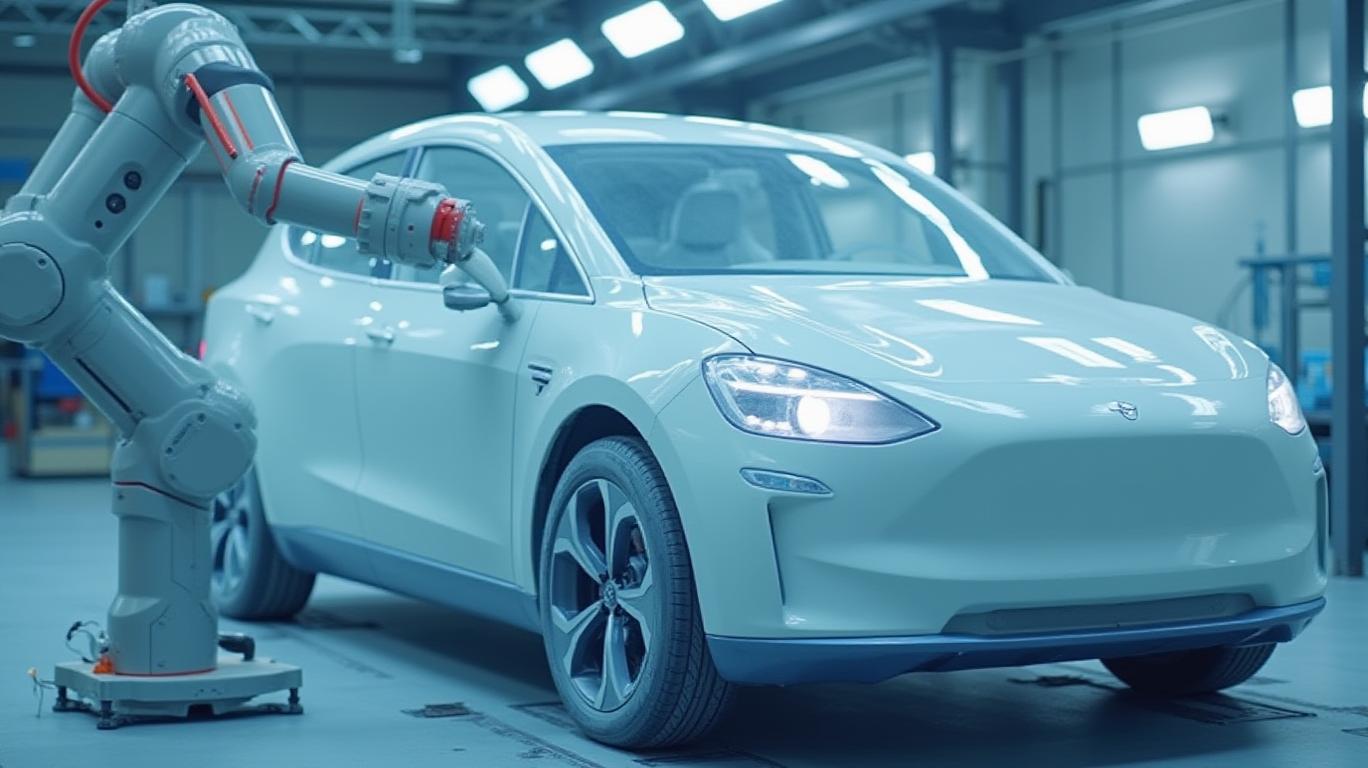Dürr AG: Navigating Margin Headwinds to Seize Automation’s Golden Age
The industrial automation sector faces a paradox: near-term profitability pressures loom even as secular tailwinds—reshoring, electrification, and sustainable production—accelerate demand for advanced manufacturing solutions. Nowhere is this tension clearer than at Dürr AG, which reported Q1 2025 results that underscore its strategic pivot toward high-margin automation and sustainability technologies. While short-term margin erosion and macro risks warrant caution, Dürr’s valuation, R&D-driven innovation, and underpenetrated market opportunities position it as a compelling buy for investors willing to look beyond the next quarter.
Near-Term Challenges: A Necessary Transition
Dürr’s Q1 results revealed uneven performance across its divisions. The Automotive Division grew revenue by 8% to €482.4 million, driven by equipment sales for EVs and large-scale projects in the Americas and Saudi Arabia. However, order intake fell 39% due to a prior-year base effect from a major German partnership. Meanwhile, the Industrial Automation Division struggled, with revenue declining 11.6% as EV investments by tier-1 customers slowed and the deconsolidation of Agramkow weighed on margins. EBIT margins here collapsed to 0.1%, pressured by underutilized capacity and R&D spending on lithium-ion battery tech.
The Woodworking Division, a bright spot, saw order intake hit a record €391.2 million, though revenue dipped 3.5% due to delayed projects. Its EBIT margin rose to 3.8%, reflecting cost discipline and service revenue growth.
Margin pressures are acute but transitional. Dürr’s EBIT margin before extraordinary effects dipped to 3.9%, while net income rose 41% to €17.1 million. The company’s decision to divest its Clean Technology division—a drag on margins—signals a ruthless focus on core automation businesses.

The Strategic Pivot: Automation & Sustainability as Growth Engines
Dürr’s long-term advantage lies in its dual focus on Industry 4.0 and environmental solutions, which are underpinned by three pillars:
- EV Manufacturing Dominance:
- Dürr’s RoboPaint systems dominate premium EV painting, offering 30% energy savings and zero masking waste via AI-driven robots.
- The EcoNextJet system, launched in Q1, eliminates masking films, reducing paint waste and energy use by 25-30%.
Its software-as-a-service (SaaS) platform, integrated with ADAMOS (a joint venture with Siemens), offers predictive maintenance and digital twins for equipment lifecycle optimization.
Woodworking Innovation:
Dürr’s HOMAG division (83.8% owned post-Q1 share buybacks) leads in smart automation for sustainable building materials. Its digital solutions now account for 40% of orders, enabling customers to produce energy-efficient wooden housing at scale.
R&D & Acquisitions Fueling Moats:
- Dürr’s Q1 R&D spend rose 12% year-on-year, with a focus on battery assembly lines and AI-driven quality control.
- Past acquisitions—BBS Automation (2020) for robotics and ADAMOS (2016) for software—have created cross-selling synergies, boosting recurring software revenue by 20% in 2024.
The Undervaluation Case: A 14.2x Multiple on a $350M Upside
Dürr’s P/E ratio of 14.2x (TTM) lags the industrial sector’s median of 24.4x, despite its strong balance sheet and growth profile. Key catalysts justify a revaluation:
- Forward P/E of 9.3x assumes 2025 EBIT margins of 4.5-5.5%, achievable as EV and wooden housing demand ramps.
- Dividend yield of 3.2% offers downside protection, with a 2024 payout ratio of just 30%.
- Market leadership in underpenetrated niches: Only 15% of global automotive paint shops use Dürr’s energy-efficient systems, leaving vast global expansion potential.
Risks and Mitigants
- US Tariffs: Dürr’s localized production in Mexico and Poland limits exposure.
- EV Investment Delays: Long-term EV adoption trends remain intact, with 40% of global light vehicles expected to be electric by 2030.
- Debt Levels: Net debt rose to €482M, but liquidity remains robust at €849M, with €750M in unused credit lines.
Conclusion: Buy the Dip in Automation’s Future
Dürr’s Q1 results highlight a company in transition: short-term margin hits from macro headwinds and strategic repositioning are outweighed by its leadership in EV manufacturing, smart woodworking, and sustainability-driven software. At 14.2x earnings and with a consensus target price of €29.40 (35% upside), the stock offers a rare combination of value, dividends, and secular growth. Investors who act now may secure a stake in a firm poised to profit from two unstoppable trends—automation and sustainability—long before the market catches on.

Comments
No comments yet